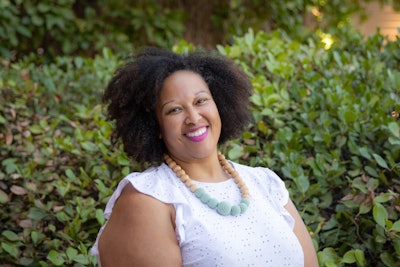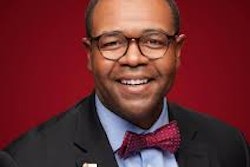Dr. Renae D. Mayes is an Associate Professor of Counseling at University of Arizona
Dr. Shawn C. T. Jones is an Assistant Professor of Psychology at Virginia Commonwealth University
Dr. Lauren C. Mims is an Assistant Professor of Applied Psychology at New York University
Dr. Paul C. Harris is Founder of Integrity Matters, LLC
Dr. Donna Y. Ford is Distinguished Professor of Education and Human Ecology at The Ohio State University
Mandy K. Dhahan is a Doctoral Student in Counselor Education & Supervision at the University of Arizona
Dr. Katie Mitchell-Dodge is a Doctoral Student in Counselor Education & Supervision at the University of Arizona
“When I think of Black youth mental health, my first thought is that we don’t talk about it enough…..And when I think about what Black youth deal with, I believe that the experiences that some Black youth go through affect our mental health in ways other groups just don’t have to deal with.” - Eliot, 7th grade student
In 2020, the Congressional Black Caucus released Ring the Alarm: The Crisis of Black Youth Suicide in America. This report challenged misperceptions regarding Black youth, mental health, and suicidality. Black youth do indeed experience psychiatric disorders (e.g., anxiety, depression) while being less likely than their White peers to have access to and engagement in treatment (CBC, 2020). Further, rates of death by suicide for Black youth have risen since 2007 at a rate that is faster than any other racial/ethnic group. Black youth under the age of 13 are two times more likely to die by suicide when compared to same-race peers (CBC, 2020). More recent and troubling statistics offer the following: Suicide rates among Black youth in the United States are growing at an alarming rate. From 2018 to 2021, the racial group that saw the largest increase in suicides among people 10-24 years old was Black individuals, with an increase of 37%. From 2000 to 2020, Black youth ages 10-19 also experienced the largest increase in suicide rates, a shocking 78%. And in a research study among the youngest children — ages 5-12 — Black youth were approximately two times more likely to die by suicide than their White counterparts. Black students also had a higher rate of suicide attempts when compared to their White and Hispanic counterparts. In other worrisome trends, suicide rates are also growing among other children of color, as well as among youth who identify as LGBTQ+.  Dr. Renae D. Mayes
Dr. Renae D. Mayes
Given this stark reality, there is a critical need for culturally responsive services tailored to the mental health needs of Black youth. This call is for both in-service practitioners and training programs in higher education in order to prepare current and future generations of practitioners to respond to the mental health needs of Black youth. In doing this though, it is important that practitioners refuse the narratives that minimize Black youth to a story of sorrow and pain. There must be an intention to see Black youth fully and to understand they are more than the sum of their traumatic experiences. We must embrace Black joy and homeplace as foundational to this work.
Homeplace, as bell hooks (1990) describes, is a sanctuary space that is humanizing, loving, and full of grace. It is an intentional space - a safe space that is cultivated to welcome healing and warmth that encourages growth and wholeness (hooks, 1990). It is the acknowledgment of personhood. Weaver (2021) calls on the need for homeplace to be developed in schools and references Love’s (2019) notion of homeplace as a “space where Black folx truly matter…where souls are nurtured, comforted, and fed” (p. 41). Noticeably, related to homeplace is the notion of Black joy -- celebrating, bearing witness, and honoring the great advancements Black people have achieved throughout time, as well as their agency, which often is overshadowed due to rigid narratives focused heavily on the pain. Notably, Black joy does not forgo pain; it embraces joy while feeling it. According to Duncan et al. (2023), Black joy is “the sustaining life force that propels Black people…exist[ing] in spaces where Black children can ‘imagine, dream, create, resist, take up space, and be” (p. 243).
Taken into the context in which Black youth exist, Black joy and homeplace recognize that in spite of institutional and intersectional oppression, Black youth are whole - fearfully and beautifully made. It recognizes the connection to the present-day and ancestral collective which provides both strength and solace. It’s in this recognition of connection that homeplace and Black joy honor the voices of Black youth and their families to understand their unique journey and connection to the collective. Through this foundation of Black joy and homeplace, we can heal and address mental health holistically because we see Black youth and their families fully. Without such, intervention and even prevention efforts stand to minimize the existence of Black youth and render them personally responsible for systemic causes and mental health issues.
Mayes et al. (2022) assert that a foundation of homeplace and Black joy paves the way for freedom dreaming. Though freedom dreaming, Black youth are invited to envision a liberatory future that is not limited by the present, often anti-Black, systems and constraints (Kelley, 2003). As homeplace and Black joy are centered, Black youth experience the love and protection needed to engage in a radical imagination to envision a future wherein their schools and communities are places that center their humanity, joy, healing, creativity, resilience, and resistance (Love, 2019). These freedom dreams then serve as the guiding light for continued work toward the schools and communities envisioned by Black youth, while also affirming and supporting their growth, healing, and well-being.
As the need for services to support the mental health needs of Black youth is critical, we assert that these efforts must incorporate homeplace and Black joy in order to center their humanity and voices in the creation of what is needed. We believe that their voices are central to prevention and intervention efforts around mental health. Said differently, practitioners need to recognize the agency of Black youth and embrace a nothing about us without us approach, meaning that Black youth are at the table regarding efforts to understand and address their unique needs and experiences.
In order to center homeplace and Black joy to address the critical mental health needs of Black youth, both preservice and in-service practitioners must act now. Below are suggestions for training programs that prepare preservice practitioners, as well as in-service practitioners.
Recommendations for Training Programs
- Integrate Black joy and homeplace as a part of the training curriculum. Training opportunities offer students a space to learn deeply, and gain skills related to this work.
- Ensure that all students and trainees understand both the historical and contemporary state of Black youth mental health, particularly regarding the social determinants of said mental health. Further, intentionally teach about Black youth mental health alongside culturally responsive healing and coping techniques.
- As a part of integrating Black joy and homeplace in the training curriculum, incorporate Black histories that reject deficit narratives and center the full humanity of Black youth and their assets.
- Address program practices that perpetuate anti-Black racism and serve as gatekeeping mechanisms that push preservice Black students out of training programs. Programs often serve as a systems model for graduates to understand how systems work and respond to current needs. As such, programs must aim to be congruent in curriculum, and practices and systems in which the program is embedded (i.e., recruitment, admissions, retention, milestone navigation, etc.).
- Collaborate. Work with Black practitioners and community members to create service-learning opportunities that center the knowledge and expertise inherent in the Black community and culture.
- Provide practicum and internship opportunities working with Black youth and supervision and mentorship to ensure that preservice students: (a) develop of awareness; attitudes, knowledge, and skills necessary to see the full humanity of Black youth; (b) understand the impact of systems of Black youth; and (c) support Black youth mental health and engage in systems intervention to protect Black youth.
- Hire Black faculty with expertise in Black youth mental health. This is critically important as previously mentioned - Black joy and homeplace cannot be cultivated without Black voices at every level of the process.
- Understand that representation matters. Include work by Black scholars in course syllabi and ensure that Black researchers and practitioners are invited to share their expertise in departmental colloquium, professional development opportunities, and/or in other spaces of learning.
In-service Practitioners
- Engage in practices that center Black youth voice. This can include utilizing youth participatory action research (YPAR) or critical hip-hop practices, which are healing practices that also recognize the strength and power of Black youth to be agents of change in creating the school and community they need (Mayes et al., 2022).
- Understand that Black joy and homeplace are rooted. Essentially, Black joy is interconnected with historical and present-day Black diaspora. As such, practitioners must understand that it can only be created and cultivated in community with Black youth and adults. Practitioners should, then, aim to build spaces of mutual liberation with Black youth and the community where teachings and understandings from the collective are integrated as a part of healing and shared learning.
- Engage Black youth in teaching and learning related to mental health. The Black community, including Black youth, still faces stigma related to mental health. It is important for practitioners not only to normalize and discuss mental health, but also to provide spaces for Black youth to make meaning of their own experiences and gain strategies to promote their healthy development. These discussions can also normalize and provide referrals for mental health service providers in schools and the community that have already been vetted as culturally responsive practitioners.
- Integrate culturally responsive screenings and therapies for mental health in schools and other spaces where Black youth exist (CDC, 2020). Often, the field of mental health integrates practices and tools that have not been normed on or created for Black youth. As such, those interventions and supports can be more harmful than helpful due to missing the nuance of the experiences and needs of Black youth. As such, K-12 school-based providers must be trained in culturally responsive practices, as well as in organizations that schools purposefully partner with. This may include, but is not limited to attachment-based, multisystemic, and optimal therapies.
- Hire Black practitioners. It is critically important as practitioners to ensure that Black youth-serving organizations including schools reflect the students that they support. As such, it is imperative that Black practitioners are a part of those respective organizations to not only be a part of direct service delivery but are key contributors in the cultivation of spaces that center Black joy and homeplace.
- Develop effective policies to support Black youth mental health. These policies should be developed in collaboration Black youth and their families. As policies guide practice, staff must be regularly trained on these policies to ensure they are implemented with fidelity. It is important that these policies are reviewed and revised regularly to ensure their relevance to the current mental health needs of Black youth.
References
Congressional Black Caucus. (2020). Ring the alarm: The crisis of Black youth suicide in America. https://watsoncoleman.house.gov/imo/media/doc/full_taskforce_report.pdf
Duncan, K., E., Hall, D., & Dunn, D. C. (2023). Embracing the fullness of Black humanity: Centering Black joy in social studies. The Social Studies,114(5), 241–249. https://doi.org/10.1080/00377996.2023.2174926
hooks, b. (1990). Yearning: Race, gender, and cultural politics. South End Press
Kelley, R. D. G. (2003). Freedom dreams: The Black radical imagination. Beacon Press.
Love, B. L. (2019). We want to do more than survive: Abolitionist teaching and the pursuit of educational freedom. Beacon Press.
Mayes, R. D. & Byrd, J. (2022). An antiracist framework for evidence informed school counseling practice. Professional School Counseling, 26(1a), 18-33. https://doi.org/10.1177/2156759X221086740
Mayes, R. D., Edirmanasinghe, N., Ieva, K, & Washington, A. R. (2022). Liberating school counseling to promote freedom dreaming for Black youth. Frontiers in Education, 7(1). https://doi.org/10.3389/feduc.2022.964490
Weaver, S. (2021). To thrive, students need a 'homeplace' at school. The Journal of Staff Development, 42(4), 40–44. https://learningforward.org/wp-content/uploads/2021/08/to-thrive-students-need-a-homeplace-at-school.pdf
Note: This work is funded by a Department of Health and Human Services (HHS) Office of Minority Health (OMH) initiative to demonstrate policy effectiveness to promote Black youth mental health. Grant number: CPIMP221331


















